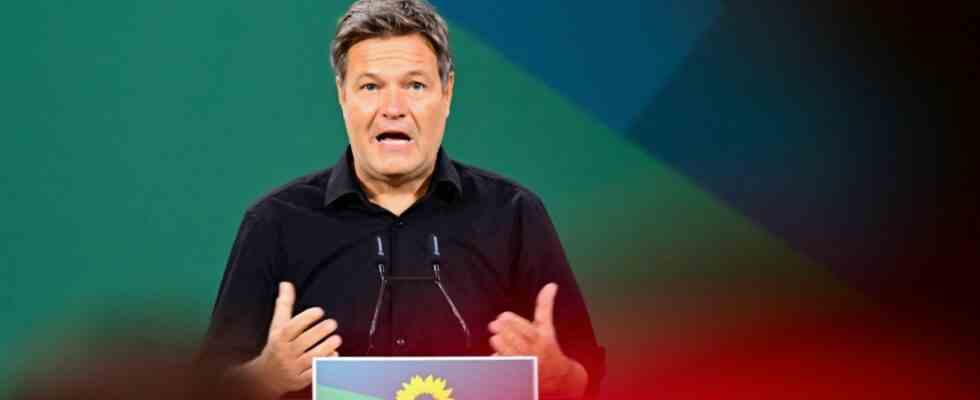It doesn’t take long before they’re jumping up and cheering at this self-exercise program. “I’ve never felt so at home as I did during this phase. And I’ve never been so proud of this party,” Robert Habeck calls into the hall on Friday evening. “We are already demonstrating how we can surpass ourselves.” Disputes in the coalition in Berlin, war in Ukraine, fear in the country, quarrels with the FDP – and if so, the Green Economics Minister lets you know. “We go where it hurts.”
It hurts at the Green Party Congress in Bonn on Friday evening. The lead motion on nuclear energy states that the Greens are prepared to keep the two southern German nuclear power plants Isar 2 and Neckarwestheim operational until mid-April 2023 in order to stabilize the power grids in winter. Environment Minister Steffi Lemke calls the application an impertinence because it delays the nuclear phase-out, but asks for approval. Economics Minister Habeck also asks for a yes.
In the spring, however, nuclear power is supposed to finally come to an end: it follows from the leading motion that the Greens in the Bundestag will not agree to any bills that would lead to the purchase of new fuel rods. Jürgen Trittin, the former Federal Minister for the Environment, was one of the people who pushed for this clear definition. Late on Friday evening, the delegates approved this proposal with a large majority. If you take all the comments, the party demonstrates its willingness to compromise with this resolution, but also commits itself to a clear end to nuclear power.
For the coalition in Berlin, however, this decision raises a whole mountain of unanswered questions. Because the traffic light has got stuck on this question. FDP leader Christian Lindner wants to keep all three active nuclear power plants running, not just the two in southern Germany. And according to his idea, they should continue to run not only until April 2023, but until 2024. To do this, the power plant operators would have to buy new fuel rods.
In Berlin, the chancellor is pushing for a settlement to the nuclear dispute. The pressure is high, including on Habeck. “This winter will be tough for all of Germany,” he said in Bonn, “also for us, also for our party.” The last half-sentence is perhaps the most important of this evening.
The green youngsters also want to make their voices heard. The Green Youth, for example, is demanding that Germany become climate-neutral by 2035, ten years earlier than planned. Others advocate the “preservation of all villages in the lignite opencast mines”. Habeck has agreed with the energy company RWE to bring forward the phase-out of coal in North Rhine-Westphalia to 2030. The symbolic village of Lützerath, however, is to give way to the excavators. The Green Youth rejects this and calls for a “moratorium on evictions”. In general, not a few younger Greens are appalled by the revival of coal power. Keeping two nuclear power plants running until spring seems like a lesser evil to some.
Party leader Ricarda Lang wants a self-confident debate
In any case, only encouragement for the government team is not to be expected at this party congress. Party leader Ricarda Lang announced before the meeting that she would like a self-confident debate that frees itself as much as possible from the practical constraints of governing in Berlin – and also makes demands that cannot win a majority in the traffic light government.
When she is on stage on Friday evening, there is – no, nothing about nuclear power, not even a bad word about the FDP – but a plea for justice. It is what connects green generations, says Lang. The Greens are also not a party of illusionists: “We make politics for the reality that is there.” Green responsibility, shaping reality, these will be key words at this party congress. “Yes, we can do it,” Lang says at some point, loosely based on Angela Merkel. “We can do it, but not because everything stays the way it is. We can do it because we act.”

